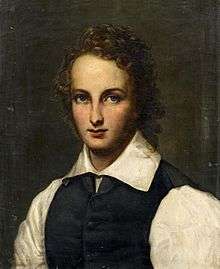Gustav Adolf Michaelis

Gustav Adolf Michaelis (9 July 1798 – 8 August 1848) was a German obstetrician who was a native of Kiel.
He studied medicine in Göttingen under surgeon Konrad Johann Martin Langenbeck (1776-1851) and obstetrician Friedrich Benjamin Osiander (1759-1822), later serving as director of the Obstetric Hospital and the School of Midwifery at Kiel. He was the father of archaeologist Adolf Michaelis (1835-1910).
Michaelis was a pioneer of scientific obstetrics, remembered for his work in the field of pelvimetry. He performed extensive research on difficulties associated with a "narrow pelvis" and its relationship to childbirth, of which he documented in a treatise called Das Enge Becken: Nach eigenen Beobachtungen und Untersuchungen.
After being informed of Ignaz Semmelweis' theory of prophylaxis for prevention of puerperal fever, Michaelis was one of the first obstetricians to adopt the practice of compulsory chlorine handwashing. He later became severely depressed over the number of women (including a beloved niece) who had died from puerperal fever due to unsanitary obstetrical practices,[1] and on August 8, 1848, Michaelis committed suicide in Lehrte, Germany.
After his death, his position at Kiel was filled by Carl Conrad Theodor Litzmann (1815-1890). Today, the "Michaelis Midwifery School" at the University of Kiel is named in his honor.
The rhombus of Michaelis, named after him, is a contour in the coccyx/sacrum region that is rhombus-shaped. Sometimes it is referred to as the "quadrilateral of Michaelis".
References
- Parts of this article are based on a translation of the equivalent article from the German Wikipedia.
- Biography of Gustav Adolf Michaelis
- Dorlands Medical Dictionary (definition of eponym)
- ↑ On Leadership: Essential Principles for Business, Political, and Personal ... by Donald J. Palmisano